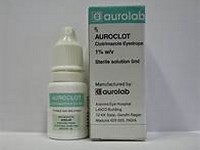Amphotericin
CLINICAL USE
Antifungal agent:
albicans
DOSE IN NORMAL RENAL FUNCTION
5 mg/kg/day for at least 14 days (see
individual product data sheet)
PHARMACOKINETICS
924.1
90
<1
2286
173.4/Unchanged
DOSE IN RENAL IMPAIRMENT
GFR (mL/MIN)
Dose as in normal renal function
DOSE IN PATIENTS UNDERGOING RENAL REPLACEMENT THERAPIES
Not dialysed. Dose as in normal renal function
Not dialysed. Dose as in normal renal function
Unknown dialysability. Dose as in
normal renal function
Not dialysed. Dose as in normal renal function
IMPORTANT DRUG INTERACTIONS
Potentially hazardous interactions with other drugs
agents and cytotoxics
unless corticosteroids are required to
control reactions)
ADMINISTRATION
Reconstition
See individual data sheet. Prepare
intermittent infusion in glucose 5%
(incompatible with sodium chloride 0.9%,
electrolytes or other drugs).
Route
IV infusion
Rate of Administration
2.5 mg/kg/hour
Comments
amphotericin administration. Can also use
antihistamines to control reactions
the dialysis circuit
Should be given post dialysis
OTHER INFORMATION
*** AMPHOTERICIN IS HIGHLY
NEPHROTOXIC ***
enabling lower doses to be used effectively
course (1 mg over 15 minutes)
conventional amphotericin B, but is
considerably more expensive
